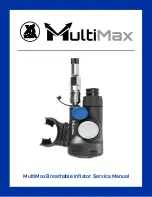
T-506 User Manual Version 3.2 | 25
There is a movable red cursor in the display area, its position can be arbitrarily selected by
tapping the screen with a finger, the corresponding acoustic magnetic delay value is given in
the upper right corner.
[
Note
] The acoustic magnetic delay value represents the time difference between the
sampling time of the sound signal at the position of the red cursor and the triggering time of
the magnetic field signal.
6.
Getting Started
6.1
Determine cable path
In order to operate the T-506, a compatible DC high voltage surge generator is required. Its
output is connected between an open end of the faulted core of the cable and the
earth/ground of the cable under test, surge generator is adjusted so that its output
discharge breaks down the fault in the cable. This is repeated periodically and the process
below is followed to find the point of failure.
To find a cable fault, first determine the path of the cable. In most cases, the cable path can
be found from drawings and. In addition, if the cable is laid in the trench or tunnel, its path
can be observed directly on site. In some cases, for example where the drawings are
incomplete, the path of the cable may not be accurately known. In these cases, an
appropriate instrument will be required to trace the route of the cable.
Once the cable path is determined, it is prudent to regularly reconfirm its position using the
T-506. The steps are as follows:
i)
Place the T-506 detector on the ground above the test cable (keeping the green
arrow on the housing pointing in the direction of the cable path) while the user is
holding the tablet PC and facing in the direction of the green arrow on the detector.
ii)
Adjust the magnetic field gain to a suitable value, wait for the T-506 magnetic field
signal to trigger and read the detector position information.
Operator interface










































